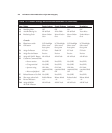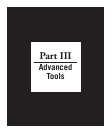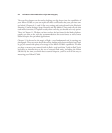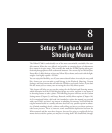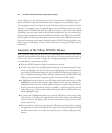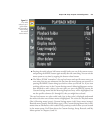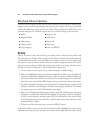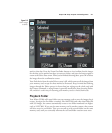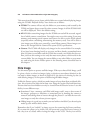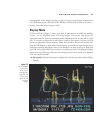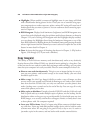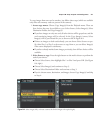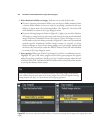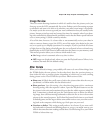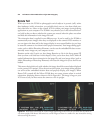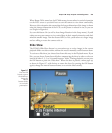This menu item allows you to choose which folders are accessed when displaying images
using the D7000’s Playback facility. Your choices are as follows:
■ D7000. The camera will use only the folders on your memory card created by the
D7000 and ignore those created by other cameras. Images in all the D7000’s fold-
ers will be displayed. This is the default setting.
■ All. All folders containing images that the D7000 can read will be accessed, regard-
less of which camera created them. You might want to use this setting if you swap
memory cards among several cameras and want to be able to review all the photos
(especially when considering reformatting the memory card). You will be able to
view images even if they were created by a non-Nikon camera if those images con-
form to the Design Rule for Camera File system (DCF) specifications.
■ Current. The D7000 will display only images in the current folder. For example,
if you have been shooting heavily at an event and have already accumulated more
than 999 shots in one folder and the D7000 has created a new folder for the over-
flow, you’d use this setting to view only the most recent photos, which reside in the
current folder. You can change the current folder to any other folder on your mem-
ory card using the Active Folder option in the Shooting menu, described later in
this chapter.
Hide Image
Use this menu option to protect and hide images. When you choose Hide Image, you’ll
be given a choice to select/set images (using a selection screen almost identical to the
one used to delete images, as shown in Figure 8.2); the choice of selecting by date (as
with deleting images); or the option of deselecting all hidden images.
Unlike the Protect option, which just marks images to keep them from accidental dele-
tion, this selection also hides them from view using the regular Playback functions.
Pictures that have been hidden can only be viewed from the selection screen. I use this
facility in two different ways:
■ Sometimes I have a memory card filled with images and I want to show some of
the images, perhaps as a slideshow, or sometimes just by handing the camera to
someone and asking them to browse through the photos. I can hide the non-rele-
vant images so only the relevant pictures appear.
■ Hiding images is a good way to make your real stinkers invisible if you haven’t quite
made up your mind to delete them.
Remember that if you “unhide” an image you are also removing the Protect attribute.
If you want the photo to be visible, but still protected, press the Protect button (it
has a key icon as a label) while viewing the image on the LCD. The key icon will be
David Busch’s Nikon D7000 Guide to Digital SLR Photography218



